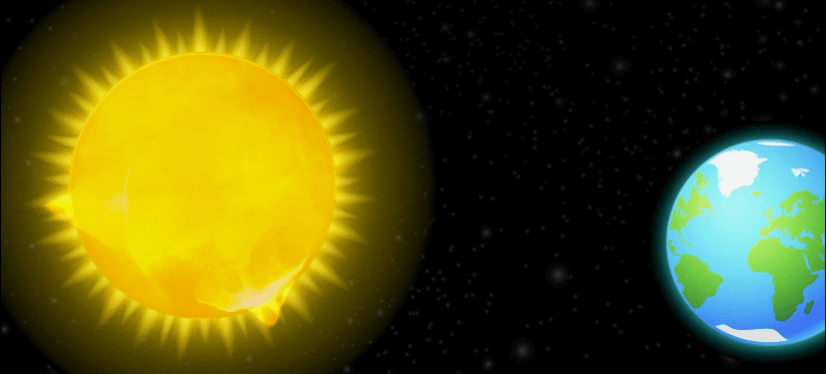Major discovery can forecast space storms with greater accuracy than ever before
It is now possible to predict the precise speed a coronal mass ejection is travelling at and when it will smash into our planet

Space storms could soon be forecasted with greater accuracy than ever before thanks to a big leap forward in our understanding of exactly when a violent solar eruption may hit Earth. (CREDIT: National Aeronautics and Space Administration (NASA))
Space storms could soon be forecasted with greater accuracy than ever before thanks to a big leap forward in our understanding of exactly when a violent solar eruption may hit Earth.
Scientists say it is now possible to predict the precise speed a coronal mass ejection (CME) is travelling at and when it will smash into our planet – even before it has fully erupted from the Sun.
CMEs are bursts of gas and magnetic fields spewed into space from the solar atmosphere.
They can cause geomagnetic storms that have the potential to wreak havoc with terrestrial technology in Earth's orbit and on its surface, which is why experts across the globe are striving to improve space weather forecasts.
Advancements such as this one could make a huge difference in helping to protect infrastructure that is vital to our everyday lives, according to researchers at Aberystwyth University, who will present their findings today at the Royal Astronomical Society's National Astronomy Meeting in Hull.
They made their discovery after studying specific areas on the Sun called 'Active Regions', which have strong magnetic fields where CMEs are born. The researchers monitored how these areas changed in the periods before, during and after an eruption.
A vital aspect which they looked at was the "critical height" of the Active Regions, which is the height at which the magnetic field becomes unstable and can lead to a CME.
"By measuring how the strength of the magnetic field decreases with height, we can determine this critical height," said lead researcher Harshita Gandhi, a solar physicist at Aberystwyth University.
"This data can then be used along with a geometric model which is used to track the true speed of CMEs in three dimensions, rather than just two, which is essential for precise predictions."
She added: "Our findings reveal a strong relationship between the critical height at CME onset and the true CME speed.
"This insight allows us to predict the CME's speed and, consequently, its arrival time on Earth, even before the CME has fully erupted."
When these CMEs hit the Earth they can trigger a geomagnetic storm which is capable of producing stunning aurorae, often referred to in the northern hemisphere as the Northern Lights.
But the storms also have the potential to disrupt vital systems we rely on daily, including satellites, power grids, and communication networks, which is why scientists worldwide are working hard to improve our ability to better predict when CMEs will hit Earth.
This requires knowing a more accurate speed of the CME shortly after it erupts from the Sun to better provide advance warnings of when it will reach our planet.
Accurate speed predictions enable better estimates of when a CME will reach Earth, providing crucial advance warnings.
"Understanding and using the critical height in our forecasts improves our ability to warn about incoming CMEs, helping to protect the technology that our modern lives depend on," Gandhi said.
"Our research not only enhances our understanding of the Sun's explosive behaviour but also significantly improves our ability to forecast space weather events.
"This means better preparation and protection for the technological systems we rely on every day."
Five largely unknown facts about space storms
1. SPACE Storms Can Cause Satellite Drag
Solar storms can increase the density of Earth's upper atmosphere, causing satellites to experience higher drag. This additional drag can alter their orbits and potentially lead to premature reentry into the atmosphere. Engineers must account for this when designing and operating satellites.
2. Impact on Aviation
Space storms can pose risks to aviation, particularly for flights over polar regions. These storms can lead to increased radiation exposure for passengers and crew, and can disrupt high-frequency radio communications and GPS signals, which are crucial for navigation.
3. Geomagnetic Induced Currents (GICs)
During intense solar storms, geomagnetic induced currents can flow through power grids, pipelines, and railways. These currents can damage transformers and other critical infrastructure, leading to power outages and operational disruptions. Engineers have to design systems to withstand such events.
4. Auroras Beyond the Poles
While auroras are commonly associated with polar regions, strong space storms can cause auroras to be visible at much lower latitudes. There have been instances where auroras were seen as far south as Texas and Florida in the United States.
5. Historical Superstorms
One of the most significant space storms on record is the Carrington Event of 1859. This event caused widespread telegraph disruptions and even fires due to induced electrical currents. If a similar event were to happen today, it could have catastrophic effects on modern technology and infrastructure.
Understanding these aspects of solar storms is crucial for preparing and protecting our technological systems and infrastructure from potential damage.
Note: Materials provided above by the The Brighter Side of News. Content may be edited for style and length.
Like these kind of feel good stories? Get the Brighter Side of News' newsletter.
Joshua Shavit
Science & Technology Writer | AI and Robotics Reporter
Joshua Shavit is a Los Angeles-based science and technology writer with a passion for exploring the breakthroughs shaping the future. As a contributor to The Brighter Side of News, he focuses on positive and transformative advancements in AI, technology, physics, engineering, robotics and space science. Joshua is currently working towards a Bachelor of Science in Business Administration at the University of California, Berkeley. He combines his academic background with a talent for storytelling, making complex scientific discoveries engaging and accessible. His work highlights the innovators behind the ideas, bringing readers closer to the people driving progress.



